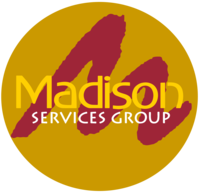By Elizabeth Sullivan
While many segments of the economy are experiencing unprecedented loss, one sector of the economy, the federal government, is rapidly increasing its spending to combat the COVID-19 virus. Reported spending obligations for COVID-19 as of May 4 are about $8.5 billion and are expected to increase in the coming weeks (note: every time the numbers are updated, the previous link will reflect those updates). Here are a few of the numbers you should be aware of as a federal contractor.
Agencies flowing the most dollars to small businesses are the Departments of Veterans Affairs (VA), Small Business Administration (SBA), Health and Human Services (HHS), Homeland Security (DHS) and Justice (DOJ). Veterans Affairs has awarded over $580 million, while HHS and SBA are tied for second with $417 million. For the Department of Justice – of the total dollars spent so far on coronavirus, 63.5% was awarded to small businesses. That is a little over $39 million of the total $62 million spent as of May 4, 2020.
Dollars are also being awarded to women-owned small businesses (WOSBs). Across all agencies, since March, over $490 million has been awarded to WOSBs to assist with COVID-19 relief. Just for some context – this number has exceeded the total dollars awarded for WOSBs in FY2018, which was $473.1 million. So, in a matter of months, the dollars awarded have exceeded an entire fiscal year’s previous spend. This increase has been across small business programs – service-disabled veteran-owned small businesses (SDVOSBs) also have been awarded $493 million and HUBZone companies $90 million.
A few examples of how what federal agencies are pursuing COVID-19 assistance include HHS refocusing its research contracts to seek assistance with COVID-19 and the Army is seeking new technology to help prevent, treat and manage the coronavirus.The SBA is on a hiring spree given their new responsibility to process $620 billion in loans to small businesses.
So, how can you take advantage of this new spending? In addition to working with your existing federal customers, there are two other ways to showcase your capabilities to assist with COVID-19. The first is to sign up on the Disaster Response Registry in SAM, where you can submit your COVID-19 related capability statements and product offerings. This registry is used agency-wide. The second is to submit inquiries to the DHS Procurement Action Innovative Response (PAIR) Team. DHS created this in response to the surge of incoming industry offers of help and innovative ideas to support the fight against COVID-19.
By the time you read this, more dollars will have been spent. Make sure you are taking advantage of these opportunities now.
